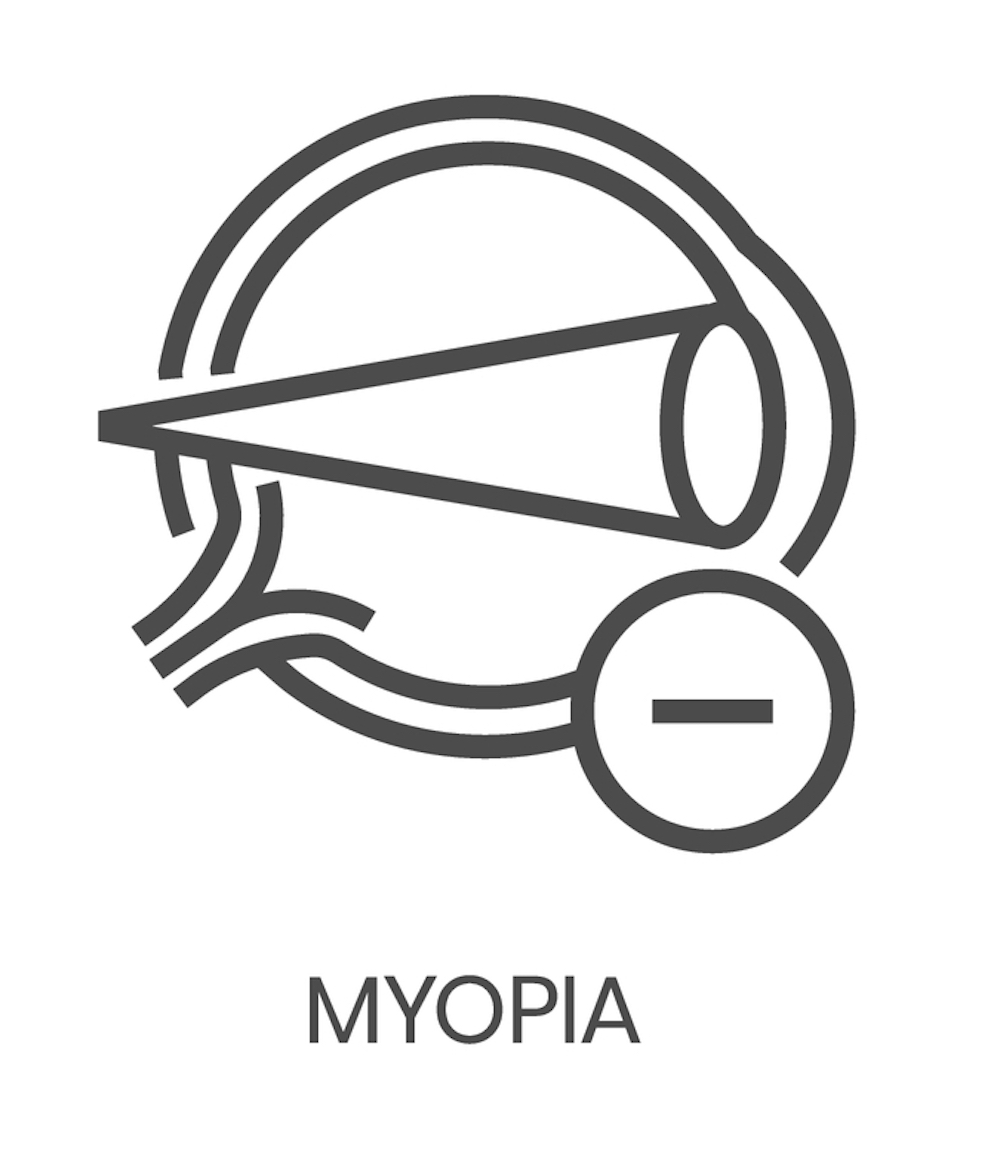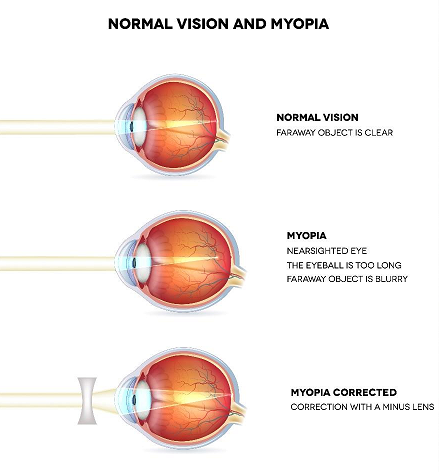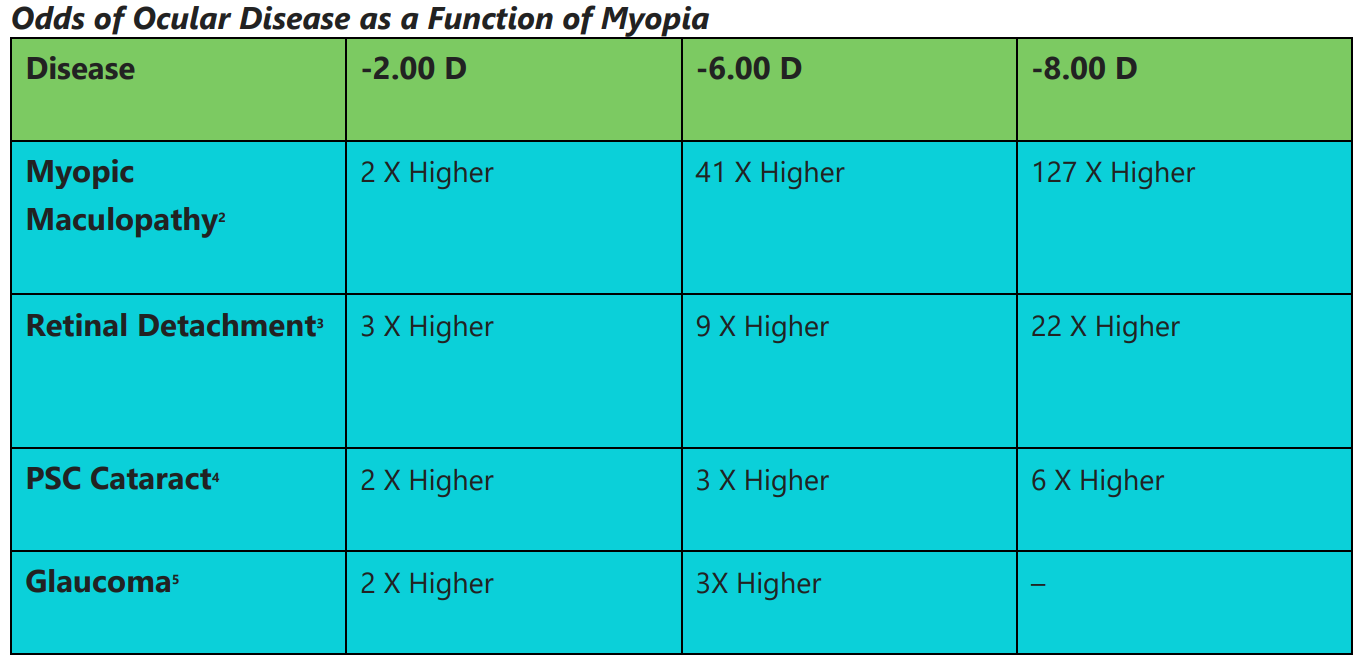
With the rate of patients diagnosed with myopia on the rise, the eyecare industry has advanced exponentially in managing myopia over the last decade. There are now several myopia control or myopia management treatment options. At Factoria Eye Clinic we specialize in strategies proven to slow down or stop your child's eyesight from getting worse. One part of our management strategy includes measuring the axial length. This allows us to provide the most effective treatment options available.
Understanding Myopia
Myopia, also referred to as nearsightedness, can affect children and adults. Myopia causes light that passes through the eye to be refracted in front of the retina as opposed to directly onto it. This means the message sent through the optic nerve to the brain is fuzzy and therefore the image that is seen is not clear. Myopia is typically caused by one of two reasons. Either the focusing power of the cornea or lens inside the eye is too great or the eyeball may be too long in contrast to its focusing power.
The light that enters a myopic eye tends to bend in a way that causes people and objects at a distance to blur. A nearsighted eye has an elongated eyeball. It increases the distance between the cornea and the retina. This causes vision blurriness when focusing on distant objects.

To identify the best way to manage your myopia, your eye doctor at Factoria Eye Clinic, will measure your visual acuity and axial length.
High Myopia
High myopia is a medical term for severe or high-degree nearsightedness. An individual with high myopia would need a vision prescription of six diopters or more. This condition can increase the risk of developing sight-threatening eye disease. Therefore, it is best to manage myopia progression before it becomes high myopia.
High myopia affects about two percent of the population. Do you have high myopia? If so, you have a greater predisposition to the following eye disorders:

Degenerative Myopia
Degenerative, malignant, or pathological myopia is less common than low or high myopia. Even so, it is one of the leading causes of legal blindness in America. In degenerative myopia vision loss can be severe and happen quickly. It becomes severe as the eyeball continues to grow during the early adult or teenage years and can worsen as you age.
Hence, individuals with high myopia must undergo regular dilated eye exams. The goal is to check for any signs of complications. Myopia control can halt or slow the progression of nearsightedness.
What Is Axial Length?
Axial length is the distance from the eye's corneal surface to the retina. The patient's refractive error worsens when the axial length increases faster than usual. As a result, measuring axial length is essential to quantify the efficacy of the treatment.
Noting the changes in refractive error is a common way of monitoring myopia progression.
The Zeiss Lenstar Myopia
This instrument provides accurate laser optic measurements from the cornea to the retina and gives precise axial length. In comparison to other instruments, the Zeiss Lenstar Myopia has more accurate measurement precision, data flow, and consistency of measurements.
Importance of Measuring Axial Length When Treating Myopia
The primary purpose of controlling myopia is to reduce the elongation rate of the axial length. The primary determinant of a refractive error is the axial length. Change in axial length highly correlates with the progression of myopia— myopia typically occurs due to a longer axial length.
The measurements of the axial length act as a valuable tool in monitoring how successful myopia control is in reducing myopia progression. It predicts the risks of myopia development and forms a basis for evaluating the effectiveness of myopia control treatments.
The measurements also help determine the clinical management plan. For example, a high pathology risk due to an increased axial length and low refractive error needs a more proactive strategy for managing the problem.
For more information about the importance of measuring axial length when treating myopia patients, or to learn more about our myopia management treatment options, contact Factoria Eye Clinic in Bellevue, WA at (425) 641-2020 to discuss any questions or schedule an appointment today.






